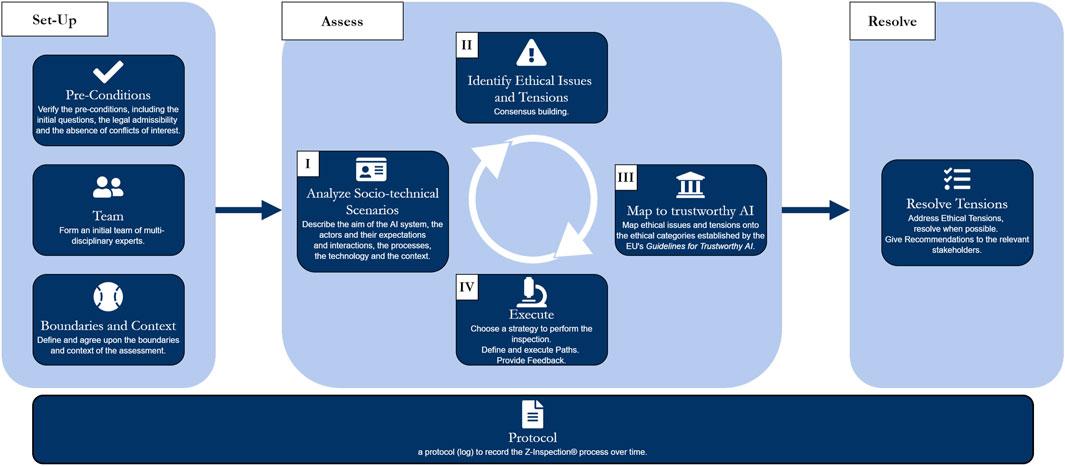In an insightful discussion centered on the concept of trustworthy artificial intelligence (AI), the speaker emphasized the fundamental importance of earning trust within the realms of technology and human interaction. While addressing a gathering,he noted that trust is inherently a human trait—one that must be reciprocated by the systems we create and utilize.Highlighting the need for companies and researchers to demonstrate robustness and reliability, he suggested that openness and explainability, often lauded as essential for trustworthiness, might not hold the same weight in practice. As the conversation unfolded, he took a moment to clarify the distinctions between AI and its subset, machine learning, underscoring the complexity behind these technologies and how they function to uncover patterns in vast data sets.With the introduction of large language models like ChatGPT, the dialog on AI trustworthiness and the collective vigilance required in navigating this evolving landscape has become more pertinent than ever.
Understanding Trust in AI and Its Human Dimensions
In the rapidly evolving landscape of artificial intelligence, the relationship between humans and technology is paramount. The capability of AI systems to make decisions can be profoundly influenced by the data they are trained on, emphasizing the need for diverse and representative datasets. When these systems exhibit biased tendencies, it can erode public confidence and ultimately lead to mistrust.Factors contributing to this erosion include:
- Data Integrity: Ensuring that the data used is accurate and unbiased.
- User Awareness: Educating users about the limitations and capabilities of AI technologies.
- Feedback Loops: Incorporating user feedback to continuously improve AI systems.
Moreover, the social implications of AI must be considered when establishing trust. Stakeholders such as healthcare professionals and patients need assurance that AI solutions not only deliver effective results but also prioritize ethical standards. This can be achieved through proactive engagement, fostering an environment where transparency is championed and concerns are addressed openly. Such engagement can break down barriers and facilitate collaboration among researchers, practitioners, and tech developers, enabling a more holistic approach to trustworthy AI.
The Role of Trustworthiness in AI Systems
For AI systems to gain user confidence, they must demonstrate a commitment to ethical practices and reliability. A key aspect of building this trust lies in the design of algorithms that prioritize fairness and accountability in decision-making. By integrating ethical guidelines into their operational frameworks, developers can ensure that AI technologies do not inadvertently perpetuate inequalities or biases. Essential measures include:
- Audit Mechanisms: Implementing regular checks to evaluate AI performance and rectify any observed biases.
- User-Centric Design: Incorporating user experience insights to create more intuitive and accessible AI interfaces.
- Clear Accountability: Establishing lines of responsibility among stakeholders to address potential failures in AI systems.
Additionally, fostering an ongoing dialogue between technology developers and the communities they serve is critical. Investing in educational initiatives that demystify AI processes can empower users,enabling them to make informed decisions about the technologies that impact their lives. By nurturing collaborative partnerships that extend beyond the tech industry to include ethicists, policymakers, and healthcare providers, a more nuanced and socially aware approach to AI growth can emerge. This concerted effort not only enhances the perception of AI as a trustworthy solution but also promotes a landscape of shared responsibility and collective progress.
Challenging the Norms: Transparency and Explainability in AI
In an era where artificial intelligence increasingly integrates into healthcare, the necessity for transparency and explainability is more crucial than ever. Stakeholders, notably patients and healthcare professionals, require clarity regarding how AI systems derive their conclusions to foster understanding and acceptance. Achieving this entails not only clarifying the algorithms at work but also providing insights into the data sources that inform decisions. To ensure a supportive ecosystem, experts advocate for:
- Accessible Documentation: Providing straightforward explanations of AI functionalities and decision-making processes to end-users.
- Visualization Tools: Implementing user-kind interfaces that graphically represent AI decision pathways, making complex concepts digestible.
- Continuous Learning Initiatives: Offering ongoing education sessions that keep stakeholders informed about advancements and ethical considerations in AI.
Moreover,fostering a collaborative research environment can significantly enhance transparency. When developers engage not only with technical experts but also with community representatives, the design and deployment of AI solutions can align more closely with societal values. This collaborative approach can lead to the co-creation of guidelines that prioritize ethical considerations while ensuring safety and efficacy in AI applications. By prioritizing these engagements, the potential for AI to act as a trustworthy ally in healthcare settings is vastly improved, establishing a shared commitment to responsible innovation.
Reframing Machine Learning: A Statistical Perspective
Analyzing machine learning through a statistical lens reveals that its essence lies not just in algorithm development, but in understanding and manipulating data effectively. When addressing healthcare applications, practitioners must recognize that various statistical principles underpin how models learn from data. Key concepts such as probability distributions, correlation and causation, and sampling techniques play a pivotal role in shaping robust solutions.For instance, ensuring that models are trained on representative datasets can mitigate the risks of bias—crucial for achieving fairness across diverse population groups. By grounding machine learning practices in these statistical foundations, developers can enhance the reliability of AI systems meant for sensitive environments like healthcare.
Moreover, emphasizing a statistical perspective enables a better grasp of model performance metrics, allowing stakeholders to set realistic expectations for AI systems. Metrics such as precision, recall, and the F1 score provide tangible ways to evaluate the effectiveness of machine learning applications. By integrating these measures during model validation, practitioners can not only affirm efficacy but also instill greater confidence among users regarding the capabilities and limitations of AI solutions. This structured approach fosters increased accountability, as it encourages continuous assessment and refinement of models based on empirical evidence, ultimately leading to a more trustworthy AI landscape in healthcare.























